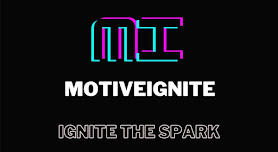A goal properly set is halfway reached. That’s what Aristotle claimed, and he was likely onto something – setting a new goal for yourself is about more than just taking the first step in that direction. In fact, when you work towards an achievable goal, your brain releases dopamine which not only helps you feel happier but also bolsters your cognitive function as your attention stays sharp and focused on the task at hand.
In this post I break down how to set a specific and achievable goal, plus some of the biggest problems that people run into when trying to achieve them.
The problem with goals
You saw that guy at the gym yesterday and you thought he was great: you wanted to be him, to have just such a strong body. Then you got up the next morning and found out how much it hurt.
Or that other guy – how did he get so muscular? He must have had some crazy training routine. Then you figured out there’s a bunch of muscles in your body that aren’t there anymore. Sad face.
Not too long ago, I used to marvel at my bike’s top speed as I pedaled it round and round the parking lot. Then I realized there was this thing called a “crank” that could make the bike go faster still. Then I found out how much harder it was to pedal when you had this little chain thingy that kept getting stuck in your gears, and those gears were starting to get a lot harder to pedal around with. Live and learn!
So when you eventually do get around to trying something new, setting goals for yourself can be daunting. Your first few weeks of learning something new is all about trying things out, discovering that you can do them, but also learning what it’s really going to take to master the skill. But how do you know how far along you are if there are no pre-existing standards to measure yourself against?
That’s where practice goals come in.
Goals defined
When I talk about goals I mean something specific: a measurable outcome with a clear start and end date, as well as a specific target condition.
For example, when I first decided to get in shape and lose some fat I made a goal that went like this:
Goal: To lose 50 pounds of fat in the next 12 months.
You can probably see what’s wrong with the way I defined my goal above. First off, the goal is not measurable; you can’t tell how far along you are towards it unless you have a scale or tape measure handy. Or, if you do have a scale or tape measure handy, then it’s impossible to know whether you are “halfway there” until a year has passed. Also, the goal is not shared with anyone else.
So using this as an example, let’s say that I got rid of 50 pounds of fat. Does that mean I achieved my goal? Maybe – maybe not. It depends on how you measure success in the first place.


Post a Comment